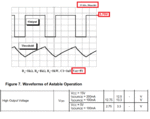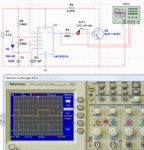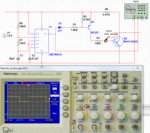boylesg
Advanced Member level 4
- Joined
- Jul 15, 2012
- Messages
- 1,023
- Helped
- 5
- Reputation
- 10
- Reaction score
- 6
- Trophy points
- 1,318
- Location
- Epping, Victoria, Australia
- Activity points
- 11,697
When you, for lack of a better term, 'daisy chain' transistors like in the following schematic.......
I assume you work backwards.
First you calculate the base resistor for the BU941P based on your desried maximum emitter current.
This gives you a required max base current which you then use as the desired emitter current for the BC327.......
But doesn't the base resistor for the BU941P effect the emitter current you get from the BC327?
Or does the voltage drop across the BC327 simply increase to maintain the emitter current you have biased it for?
Am I even on the right track here or talking nonsense?
**broken link removed**
I assume you work backwards.
First you calculate the base resistor for the BU941P based on your desried maximum emitter current.
This gives you a required max base current which you then use as the desired emitter current for the BC327.......
But doesn't the base resistor for the BU941P effect the emitter current you get from the BC327?
Or does the voltage drop across the BC327 simply increase to maintain the emitter current you have biased it for?
Am I even on the right track here or talking nonsense?
**broken link removed**





